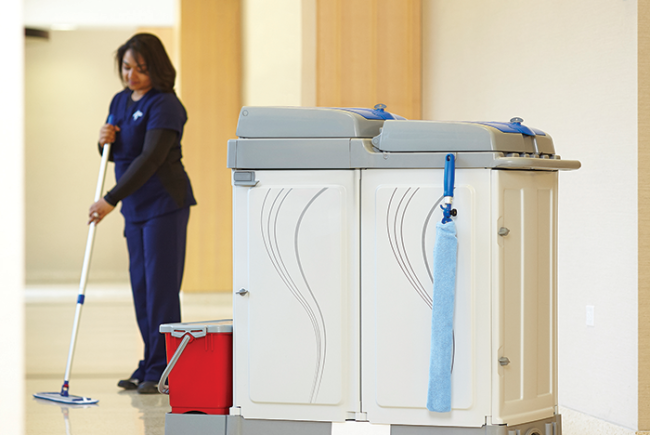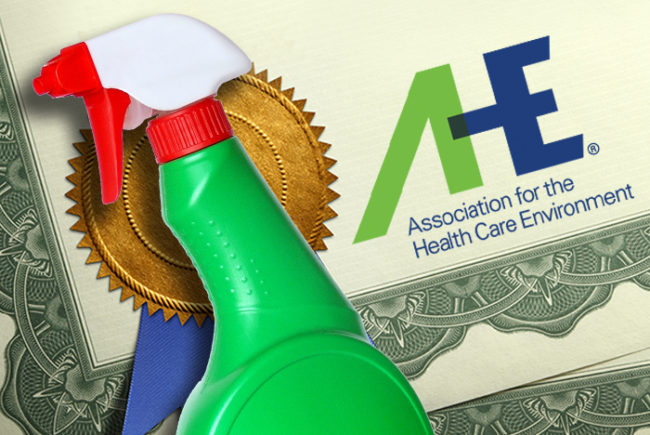When citing critical roles in the health care environment, surgeons and emergency department staff are usually the first who come to mind. However, those who set the stage for the important work that happens in hospitals — environmental services teams — are just as important. These staff members are vital to the overall efficacy of health organizations by keeping facilities clean, ensuring that they are hygienic to help prevent the spread of disease as well as contributing to a positive patient experience.
Because patients expect to emerge from health care facilities in better health than when they first entered, the national post-hospitalization HCAHPS survey is designed to measure patient satisfaction to increase facility accountability and to reward value-based care.
What if there were a better way to manage hospital environmental services with improved patient satisfaction? The Internet of Things trend has brought intelligence and connectivity to the restroom, for example. New data-enabled systems analyze real-time information from sensors in individual hospital washrooms or wash stations with the following benefits:
- Working smarter, not harder. Real-time data collection technology provides a holistic view of health care environments, allowing staff to respond rapidly when necessary. This information has been made even more convenient for environmental services staff when the data are accessible through a computer dashboard or a smartphone app, enabling them to alter service routes on the go, based on facility needs.
- Managing staff and inventory. Access to live data also enables hospital management to do a better job of assigning tasks to environmental services teams. Because sensor-equipped dispensers flag needs only when products truly need to be refilled, staff can avoid making replacements — which are sometimes unnecessary — based on a timetable. With this flexibility, hospital administrators can assign vital tasks such as cleaning critical areas instead of asking staff to make their way around a large facility, checking stock room by room. Furthermore, analytics also can help administrators to understand product consumption patterns that guide the volume and frequency of new orders.
- Improved customer satisfaction: The HCAHPS survey aims to increase health care facilities’ transparency and produce data surrounding patients' perspectives. In fact, patient satisfaction ratings from this survey directly impact institutional funding. Thus, a crucial step to improving the quality of inpatient stays — and subsequent ratings — is ensuring that patient hygiene and comfort needs are continuously met through fully stocked, clean hospital rooms and patient restrooms. After all, the last thing a sick patient should face during illness is a lack of bath tissue or a shortage of hand soap.
- Sensitivity to patient needs: Parallel to ensuring that patient rooms are fully stocked, environmental services teams must also consider that patients expect comfort and privacy during their stays. Thus, while it is imperative that a patient's washroom is equipped, environmental services staff should also be cognizant of noise in addition to the number of times they enter a patient’s room throughout the day. By knowing when it is essential to do so through real-time analytics and adhering to that, staff can contribute to improved patient satisfaction.
Data are revolutionizing the way modern health care facilities are run. By harnessing real-time analytics, administrators can greatly improve the function of such key staff as environmental services teams.
Jimy Baynum is the market development director of AfH Professional Hygiene for SCA, Philadelphia.
AHE INSIGHTS
Practice guidance available
Practice Guidance for Healthcare Environmental Cleaning, second edition, helps to define and advance the professionals responsible for care of the health care environment to ensure high-quality outcomes and healthy communities.
This manual provides evidence-based research, guidance and recommended practices that should be considered for inclusion in health care environmental services departments. Because each facility has its own needs, this resource has been designed to enhance an existing program.
For more information, visit www.ahe.org/ahe/learn/tools_and_resources/publications.shtml.
Certified Healthcare Environmental Services Technician Certificate
This certification focuses on critical areas of competency for front-line technicians, including infection prevention, quality of care, patient outcomes and experience.
For more information, visit www.ahe.org/ahe/lead/CHEST/chest_home.shtml.
Environmental Sustainability Certificate Program
AHE has launched a certification to acknowledge the environmental and ecological sustainability efforts of environmental services departments.
For more information, go towww.ahe.org/ahe/lead/environmental_sustainability_certificate_program.shtml.





